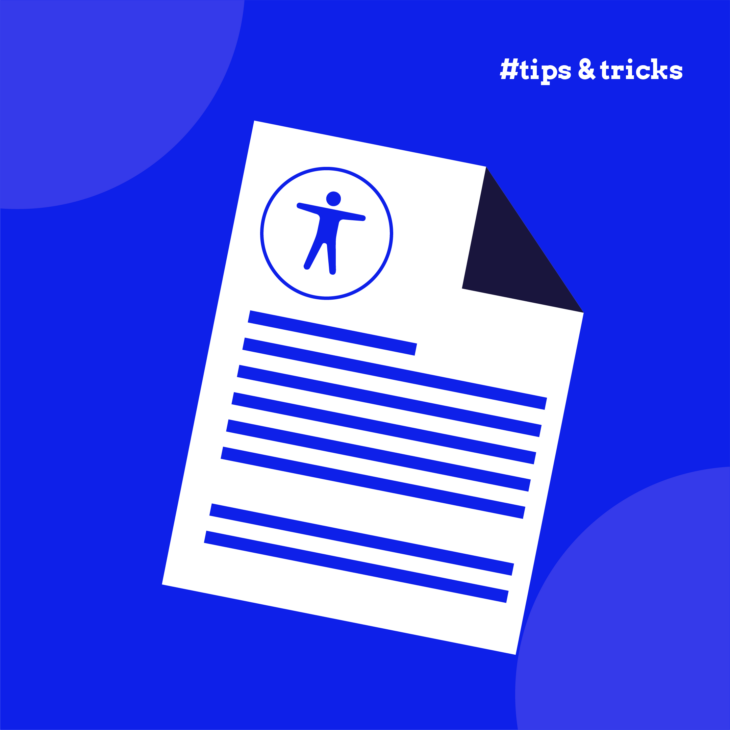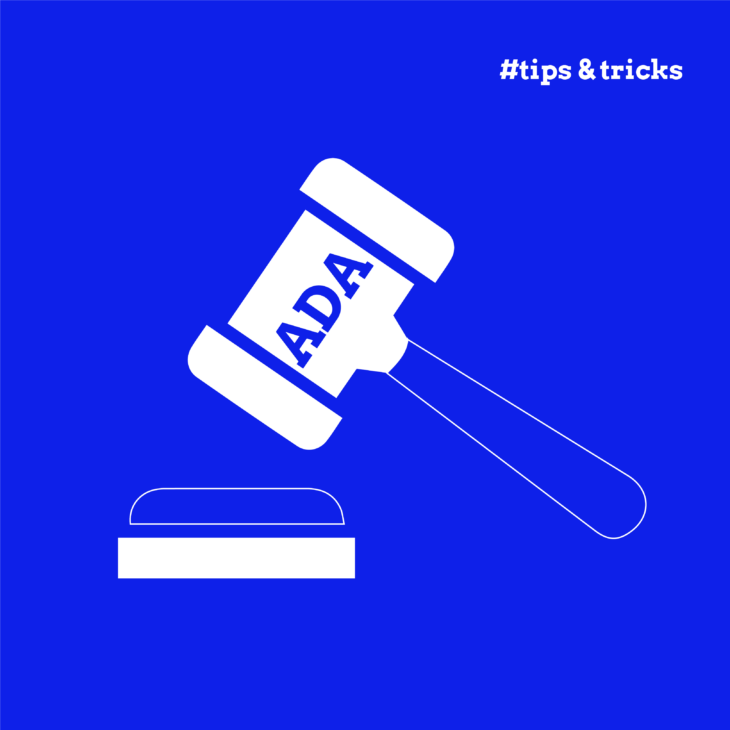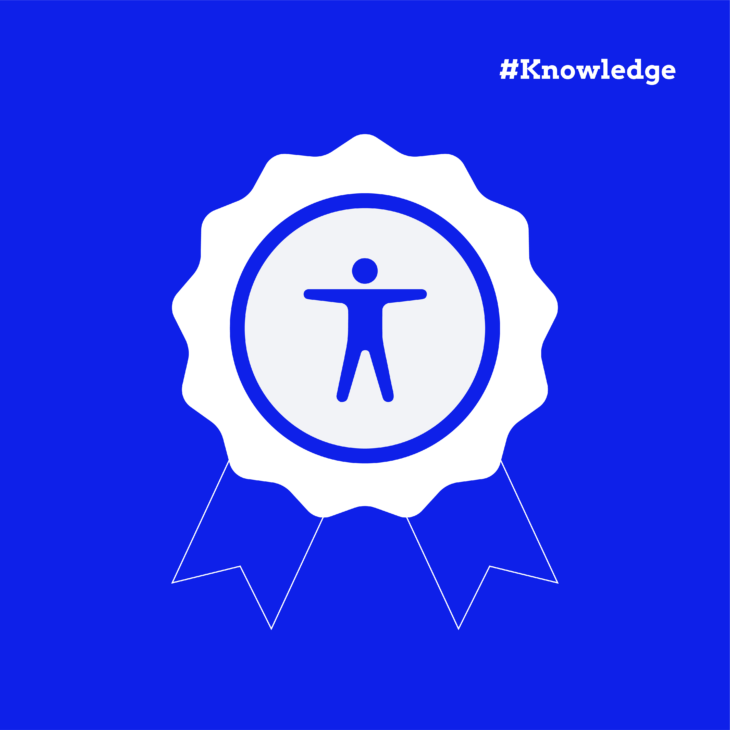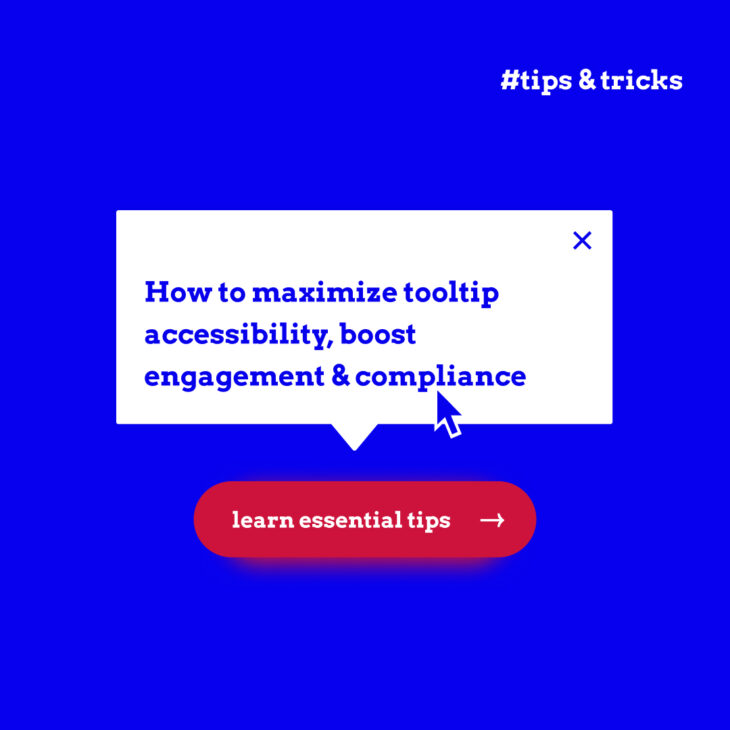Taeke Reijenga has extensive experience with the business side of Web Accessibility. As CEO of the full service digital agency Level Level, he has managed in a short amount of time to get his entire team on board when it comes to including web accessibility in their workflow.
A well-crafted accessibility statement does two vital things: it protects your organisation and makes your website more welcoming for all users.
Many website owners already understand WCAG guidelines and work hard to meet them (Good job if you’re one of them!). However, that’s not an easy task – turning technical requirements into clear documentation can be tricky. How do you show what you’ve accomplished while being honest about what still needs work?
To help you create a better experience for your audience and protect your business from legal trouble, we’ll walk you through writing an effective accessibility statement that meets both WCAG 2.2 and regional legal requirements. You’ll learn what to include, where to place it, and how to maintain it. We’ll share practical examples and useful tools to help you get started.
Note: While this guide offers helpful frameworks, please check with your legal team about specific requirements for your region.
Why your website needs an accessibility statement
Having an accessibility statement, along with following WCAG 2.2 guidelines, helps you meet requirements set by major accessibility regulations. These include the EU Web Accessibility Directive, Section 508 of the Rehabilitation Act in the US, and the Americans with Disabilities Act (ADA).
Besides that, an accessibility statement serves as a form of protection for your organisation by:
- Creating a clear record of your accessibility efforts and improvements.
- Setting up proper communication channels for users to report issues.
- Showing your ongoing commitment to making your website better for everyone.
- Helping prevent potential lawsuits by documenting what you’ve done and what you’re planning to do.
💡Wondering about the differences between WCAG and ADA accessibility standards? We’ve got you covered!
As you can see, an accessibility statement serves a double purpose – you’re being open with users while protecting yourself legally. For instance, if someone finds an issue you’ve already documented and are working to fix, they’re more likely to use your feedback channels than pursue legal action.
Required elements for legal compliance and WCAG standards
⚠️ Disclaimer: We’re not legal experts, so please don’t take this as legal advice. Always check with a legal advisor and read the legislation relevant to your site or business.
What you need to include in your accessibility statement varies based on your location and type of website. For example, if you’re based in the USA, you’ll need to follow ADA requirements. We recommend reading up about your local requirements to make sure you’re covered.
While current laws like the Web Accessibility Directive ask for WCAG 2.1 compliance, we suggest following WCAG 2.2 guidelines. Although it’s not yet legally required, using these newer standards will make your website more inclusive and future-proof.
Your accessibility statement should include:
- Your current WCAG 2.2 compliance level (A, AA, or AAA).
- Your accessibility goals and timeline.
- A list of known accessibility barriers and when you plan to fix them.
- Which assistive technologies work with your site.
- Alternative ways to access your content.
- How to contact your accessibility support team.
- When you last tested your website’s accessibility, and when you’ll test again.
Pro tip: Make your accessibility statement a living document that grows with your website. Including a version history shows you’re actively working on improvements rather than just checking boxes.
Setting up feedback channels and support options
Making it easy for users to report problems is a big part of an effective accessibility statement. Here’s what you need:
- A dedicated email address for accessibility issues, with clear response times.
- Phone support that works with a teletypewriter (TTY) and telecommunications device for the Deaf (TDD).
- An accessible form specifically for reporting problems.
- Live chat or social media support options.
Want to go the extra mile? Document how you handle feedback, including:
- How you track reported issues.
- How you decide which fixes to tackle first.
- How long users can expect to wait for a response.
- How long different types of fixes might take.
Some websites, like Amazon, have different accessibility statements for different parts of their site (shop, information pages, interactive sections). This helps users find exactly the information they need.
Best practices for statement placement and writing guidelines
The most important thing you must do is put your accessibility statement link in your website’s footer next to your privacy policy and terms of service. This placement follows OMB guidance and makes it simple for visitors to find the information they need.
Naturally, the statement page itself needs to be accessible, too – after all, it wouldn’t make sense to have an inaccessible accessibility statement! Here’s how to make it work well for everyone:
- Use clear headings to create a logical structure that helps people scan the content.
- Pick easy-to-read fonts for all text.
- Write descriptive link text that tells people where they’ll go when they click.
- Build the page in HTML rather than PDF to work better with screen readers and other tools.
- Make navigation straightforward and consistent.
🤓Check out our UX accessibility checklist to learn more about these important aspects.
When writing the text for your statement, you need to write in simple language and avoid technical jargon; if you have to, make sure it’s clearly explained. We also recommend that you break up long paragraphs into shorter chunks and use active voice to make your writing clearer. For every paragraph, start with the most important information and make sure the content reflects the heading before it.
Finally, as the time passes and you make improvements, you need to update this document to reflect the changes.
Okay, but how do you structure an accessibility statement? While there is no set order of information, it’s good to start with your commitment to accessibility, followed by your current compliance level, known issues and planned fixes, clear contact information, and any alternative formats or tools you offer.
Remember that many people using your accessibility statement might access it through screen readers or other assistive technology. Test your page with different tools to ensure it works well for everyone.
Want to learn more about creating accessible designs?
Our “Accessible design, the basics” course covers everything from colour contrast to navigation patterns.
Accessibility statement examples and quick tips
Let’s look at three real accessibility statements that do things well in different ways:
- The USA government’s website accessibility statement excels at structure. They clearly show how they meet WCAG and Section 508 standards, openly discuss what they’re working to improve, and make it simple for users to give feedback.
- The UK government’s statement shines in its straightforward approach. They’ve found a sweet spot between offering support, being transparent about issues, and meeting compliance needs. Plus, it’s written in plain language that anyone can understand.
- Our own accessibility statement at The A11Y Collective spells out exactly which WCAG guidelines we’re aiming for, lists any known issues clearly, and gives specific steps for reporting problems.
Looking for more inspiration? We have an article with six accessible website examples to inspire your design.
And, if you need a bit more guidance, the UK Government website has provided a very useful accessibility statement template and the W3C even has a list of tools that help you test the levels of compliance of your statement.
Quick tips to remember:
- Update your statement at least once a year, as the UK Government recommends.
- Get regular third-party accessibility audits to verify your compliance.
- Check if your type of website needs specific elements in the statement – government sites have different requirements from online shops.
Ready to build your accessibility expertise? Our “Web accessibility, the basics” course teaches you everything you need to know to create and maintain an accessible website.
Ready to build your accessibility expertise?
Our “Web accessibility, the basics” course teaches you everything you need to know to create and maintain an accessible website.
Build your accessibility expertise with our professional training
Your accessibility statement reflects your team’s real-world expertise and dedication in making websites work for everyone. That’s why training your whole team makes a big difference.
At The A11Y Collective, we offer training programmes that cover every role involved in web accessibility. Besides that, our wide range of accessibility courses let you learn at your own speed and include practical exercises so you can use what you learn straight away.
These self-paced programmes directly support creating and maintaining great accessibility statements:
- “Web accessibility, the basics” covers the laws and rules you need to know.
- “Writing accessible content” helps content teams keep statements accurate and clear.
- “Accessible code” ensures your technical work matches what your statement promises.
What makes our approach different? We focus on training every team member – from designers to developers to content writers. This means everyone understands their part in delivering on your accessibility promises.
When your whole team understands accessibility, your statement becomes more than just words on a page – it’s a true reflection of your commitment to making the web work for everyone.
Ready to take your team’s accessibility skills to the next level?
Check out our course overview to find the right training for each role.






